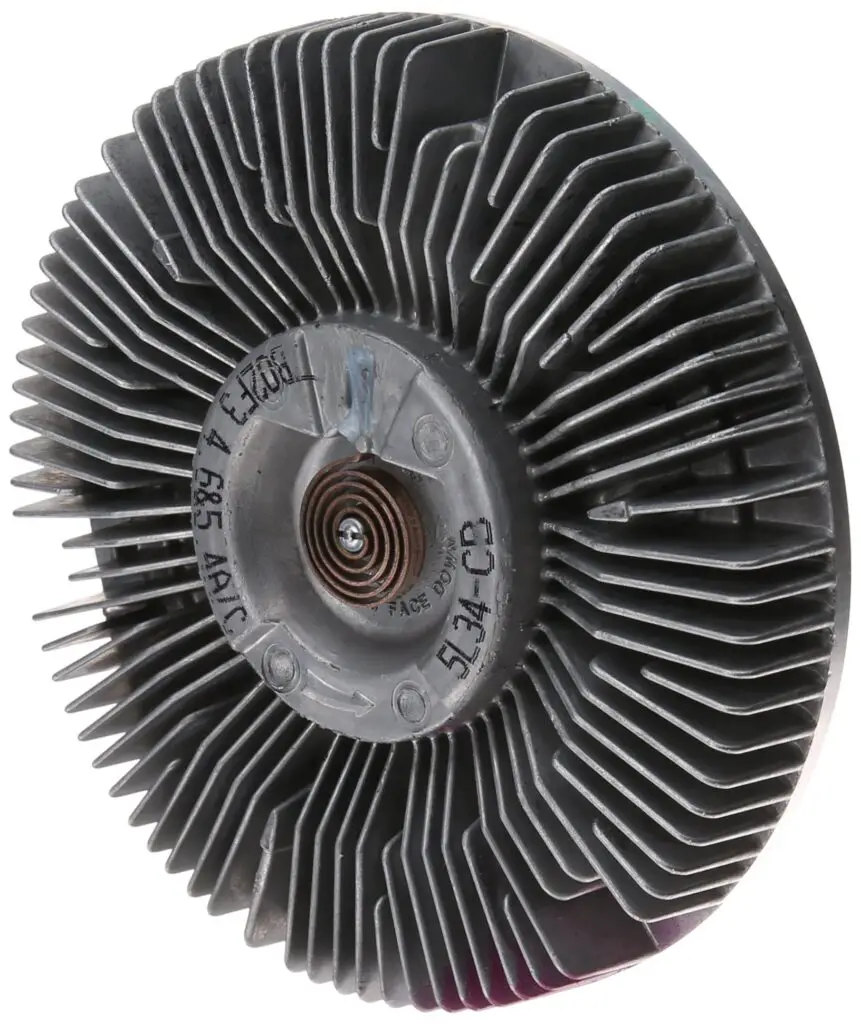In the world of automotive engines, there’s a crucial component that plays a significant role in maintaining the engine’s temperature and performance: the fan clutch.
However, encountering an issue where the fan clutch is always engaged can be a cause for concern. In this article, we’ll delve into the causes, symptoms, and possible solutions for a fan clutch that remains engaged, helping you understand how to tackle this problem and keep your vehicle running smoothly.
The fan clutch is a vital part of an engine’s cooling system. Its purpose is to regulate the cooling fan’s speed, thus controlling the amount of air flow through the radiator.
This ensures that the engine maintains an optimal operating temperature. However, when the fan clutch gets stuck in the engaged position, it can lead to several issues that require attention.
Table of Contents
Understanding the Fan Clutch

A fan clutch is a thermostatic device that operates based on temperature fluctuations. It consists of a temperature-sensitive bi-metallic coil that expands and contracts with changes in temperature.
This, in turn, engages or disengages the clutch, controlling the rotation of the fan. When engaged, the fan operates at full speed, providing maximum cooling. When disengaged, the fan rotates at a lower speed to conserve power and reduce noise.
Why Does the Fan Clutch Get Stuck?
Several factors can lead to a fan clutch becoming constantly engaged:
1. Mechanical Failure
Over time, the internal components of the fan clutch can wear out, leading to a mechanical failure. This can cause the clutch to remain engaged regardless of the engine temperature.
2. Temperature Sensor Malfunction
The temperature sensor plays a crucial role in signaling the fan clutch to engage or disengage. If the sensor malfunctions, it might send incorrect signals, causing the fan clutch to stay engaged.
3. Incorrect Wiring
Faulty or incorrect wiring can disrupt the communication between the temperature sensor and the fan clutch, leading to the clutch remaining engaged.
Signs of a Constantly Engaged Fan Clutch
Identifying the symptoms of a fan clutch that’s always engaged is essential for prompt diagnosis and repair:
Increased Engine Noise
A noticeable increase in engine noise, especially a roaring sound, can indicate that the fan clutch is continuously engaged, causing the fan to spin faster than necessary.
Poor Fuel Efficiency
Since an engaged fan clutch consumes more engine power, it can lead to decreased fuel efficiency. If you notice a sudden drop in your vehicle’s mileage, a stuck fan clutch could be the culprit.
Overheating
Ironically, a fan clutch that’s stuck in the engaged position can also lead to overheating. If the fan is constantly running at full speed, it might not allow the engine to reach the ideal operating temperature.
Diagnosing the Issue
Proper diagnosis is crucial to pinpoint the exact cause of the problem:
1. Visual Inspection
Start by visually inspecting the fan clutch and its components for any visible signs of damage or wear.
2. Temperature Testing
Using a temperature gun, measure the engine temperature and compare it to the temperature at which the fan clutch is supposed to engage.
3. Diagnostic Scan Tools
Modern vehicles are equipped with onboard diagnostic systems that can provide insights into the fan clutch’s performance. Using a diagnostic scan tool, you can retrieve error codes and sensor data.
Fixing the Engaged Fan Clutch
Depending on the root cause, there are several steps you can take to resolve the issue:
1. Checking and Replacing the Temperature Sensor
If the temperature sensor is faulty, replacing it with a new one can often solve the problem.
2. Verifying Wiring and Connections
Ensure that the wiring and connections between the temperature sensor and the fan clutch are secure and functioning correctly.
3. Replacing the Fan Clutch
In cases of mechanical failure, replacing the fan clutch with a new one might be necessary.
Preventive Measures
To avoid encountering a stuck fan clutch in the future, consider these preventive measures:
Regular Maintenance
Perform routine checks on the cooling system, including the fan clutch, during scheduled maintenance.
Cooling System Checks
Regularly inspect the entire cooling system for any leaks, blockages, or issues that could impact the fan clutch’s performance.
Conclusion
A fan clutch that’s always engaged can lead to various problems, from increased noise levels to engine overheating. By understanding the causes, symptoms, and solutions discussed in this article, you can tackle this issue effectively and ensure your vehicle’s optimal performance.
FAQs
Q1: Can I continue driving with a constantly engaged fan clutch?
It’s not recommended. Driving with a stuck fan clutch can lead to engine overheating and other complications.
Q2: How much does it cost to replace a fan clutch?
The cost can vary depending on the make and model of your vehicle. Generally, it can range from $100 to $300 for parts and labor.
Q3: Is a constantly engaged fan clutch harmful to the engine?
Yes, it can put unnecessary strain on the engine and negatively impact fuel efficiency.
Q4: Can I replace the fan clutch myself?
If you have the necessary tools and mechanical skills, you can attempt to replace the fan clutch. However, it’s advisable to seek professional help.
Q5: What should I do if my fan clutch becomes stuck while driving?
Pull over and allow the engine to cool down. Continuing to drive with an overheating engine can cause severe damage.







